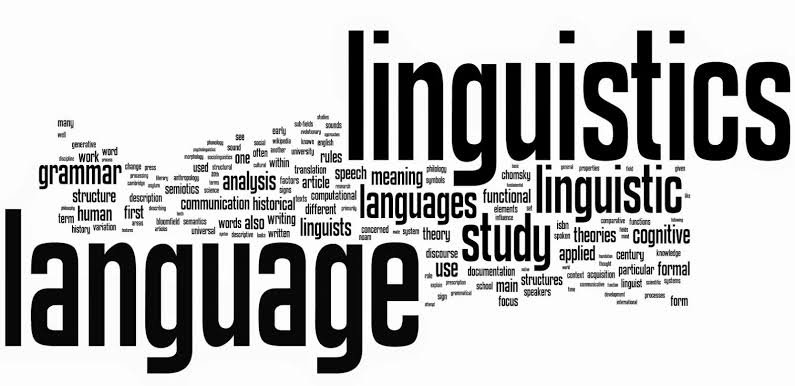In a world that often feels divided, the journey of assimilation stands as a poignant reminder of our shared quest for identity and belonging. Whether you’re an immigrant seeking to find your place in a new land or someone grappling with the complexities of cultural heritage, the process of assimilasjon is both deeply personal and universally relevant. This intricate dance between embracing one’s roots while integrating into a broader society can shape who we are at our core. Join us as we delve into the multifaceted layers of this experience—exploring stories, challenges, triumphs, and the evolving definitions of home in an ever-changing landscape. Together, let’s navigate what it truly means to belong in today’s interconnected world!
Introduction to Assimilasjon: Defining the Concept
In a rapidly globalizing world, the concept of assimilasjon—often seen as a pathway to acceptance and belonging—holds both promise and peril. As cultures collide and intertwine, individuals find themselves navigating complex landscapes of identity. The pressure to fit in can be overwhelming, sparking questions about who we are and where we belong. This journey involves not only personal transformation but also societal expectations that shape our experiences.
What does it mean to assimilate? Is it shedding parts of oneself for the sake of acceptance or finding harmony within diverse influences? Understanding this multifaceted process is essential as we explore its effects on identity, community ties, and cultural heritage. Let’s embark on an exploration of the intricate dance between assimilation and individuality—a theme that resonates deeply with many in today’s interconnected society.
History of Assimilasjon and Its Impact on Society
Assimilasjon has deep roots in history, often tied to the movement of people and the blending of cultures. As societies evolved, dominant groups frequently pressured minorities to conform.
In many cases, this desire for uniformity led to significant cultural loss. Languages faded away, traditions were abandoned, and unique identities became overshadowed by a singular narrative.
Throughout various historical periods—colonialism being a prime example—the push for assimilation created tensions within communities. It fostered resentment among those who felt their heritage was under threat.
This struggle is not just about culture; it shapes laws and policies that govern society today. The consequences ripple through generations as individuals grapple with their sense of self amidst external expectations.
Understanding this history illuminates current debates surrounding identity, belonging, and the value of diversity in an increasingly globalized world.
The Complexities of Navigating Identity and Belonging in a World of Assimilation
Navigating identity in a world of assimilasjon is like walking a tightrope. On one side lies cultural heritage, rich with traditions and languages. On the other, societal expectations that often demand conformity.
Individuals can feel torn between two worlds. Embracing local customs may bring acceptance but might also lead to feelings of loss regarding one’s original culture. This internal conflict can be overwhelming.
Belonging becomes complicated when external pressures dictate how one should look or behave. Such demands often overshadow personal identity, leading to confusion and frustration.
The quest for belonging can push individuals into assimilation, sometimes at the cost of their unique selves. Yet, there’s beauty in this struggle—a chance to redefine what it means to belong while honoring diverse backgrounds.
Emphasizing authenticity amid these challenges creates space for richer dialogues about identity and acceptance in an ever-evolving society.
Challenges Faced by Those Trying to Assimilate
Assimilation can feel like walking a tightrope. Many individuals struggle to balance their heritage with new cultural norms. This often leads to an identity crisis.
The pressure to conform is immense. People might alter their appearance, language, or even beliefs just to fit in. The fear of rejection can weigh heavily on them.
Isolation is another challenge faced during this journey. When trying to assimilate, some may distance themselves from their own communities, hoping for acceptance elsewhere but ending up feeling alone.
Additionally, there’s the emotional toll that comes with constant adaptation. It’s exhausting to navigate two worlds simultaneously without losing oneself in the process.
Misunderstanding and stereotyping are common roadblocks as well. Those attempting assimilation might find themselves caught in preconceived notions about who they should be based on superficial traits rather than their unique identities.
Advantages and Disadvantages of Assimilation
Assimilasjon offers several advantages, particularly in creating a sense of unity. Individuals who assimilate often find easier access to employment and education opportunities. They can navigate social settings with greater ease, building connections that might otherwise be challenging.
However, this process can also come at a cost. The pressure to conform may lead to the erosion of cultural identity. Traditions and languages can fade away as individuals prioritize fitting in over celebrating their heritage.
Moreover, assimilation does not guarantee acceptance from the dominant group. Those who have assimilated sometimes face skepticism or exclusion despite their efforts.
The psychological toll is worth noting too; feelings of isolation can emerge when someone feels caught between two worlds—never fully belonging to either one. This balance creates an ongoing struggle for many navigating their path through life amid the complexities of assimilasjon.
Case Studies: Real Life Examples of Successful and Unsuccessful Assimilation
Examining real-life examples of assimilasjon reveals the nuanced outcomes individuals experience. In the early 20th century, many Italian immigrants to America successfully navigated assimilation. They adopted English language skills and integrated into American society while still holding onto their cultural heritage through cuisine and family traditions.
Conversely, consider the experiences of Native American communities facing forced assimilation policies. Their rich cultures were often overshadowed by an overwhelming push towards adopting Western norms. This led to a loss of languages and traditional practices that had persisted for generations.
Another case worth mentioning is that of South Asian communities in the UK. Many have blended aspects of British culture with their own, creating vibrant neighborhoods where cultural diversity thrives alongside mainstream values. These stories illustrate how assimilation can yield varied results depending on context, community resilience, and individual choices.
Strategies for Coping with the Pressure to Assimilate
Coping with the pressure to assimilate can be daunting. Finding personal solace is key. Establishing a strong sense of self helps anchor your identity in turbulent waters.
Engaging with supportive communities fosters connection and validation. Surround yourself with like-minded individuals who respect diversity and understand your journey.
Practicing mindfulness can also offer relief. Techniques such as meditation or journaling allow for self-reflection, helping clarify feelings about cultural identity.
Exploring your heritage is another powerful strategy. Embrace traditions, languages, and stories that resonate with you. This not only nurtures pride but also strengthens ties to your roots.
Setting boundaries becomes essential too. Know when to assert your beliefs while navigating social spaces that may pressure assimilation.
Lastly, seek guidance from mentors or counselors who specialize in multicultural issues. They provide valuable perspectives and strategies tailored to individual experiences.
Alternative Paths: Embracing Diversity and Multiculturalism
Embracing diversity and multiculturalism offers a vibrant alternative to strict assimilation. This approach celebrates differences rather than suppressing them, creating a richer social tapestry.
Communities thrive when they acknowledge unique cultural contributions. Festivals showcasing various traditions foster understanding and appreciation among different groups. These events become platforms for dialogue, breaking down stereotypes.
Education plays a crucial role in this journey. Schools that incorporate diverse curricula empower students with knowledge about multiple perspectives. This awareness cultivates respect and empathy from an early age.
In the workplace, embracing multiculturalism enhances creativity. Diverse teams bring varied viewpoints, leading to innovative solutions and improved problem-solving skills.
Ultimately, fostering inclusivity can transform societies into places where everyone feels valued. Instead of conforming to one standard culture, individuals can express their identities freely while contributing to a collective community spirit that enriches us all.
Conclusion: Finding Balance Between Assimilation and Cultural Preservation
Navigating the waters of assimilasjon is a delicate balancing act. On one hand, individuals often seek to fit into their new surroundings, striving for acceptance and belonging. On the other hand, maintaining cultural heritage can be crucial for personal identity and community cohesion.
Finding this balance requires an open mind and a willingness to engage with both worlds. Embracing aspects of the new culture while honoring one’s roots can foster a richer experience for everyone involved.
It’s essential to recognize that assimilation doesn’t have to mean erasing one’s original identity. By celebrating diversity and fostering multiculturalism, society as a whole benefits from varied perspectives and experiences.
Ultimately, those navigating assimilasjon should feel empowered to define their own paths—integrating what resonates with them while cherishing what makes them unique. Encouraging dialogue among cultures will only enhance understanding and appreciation in our increasingly interconnected world.











